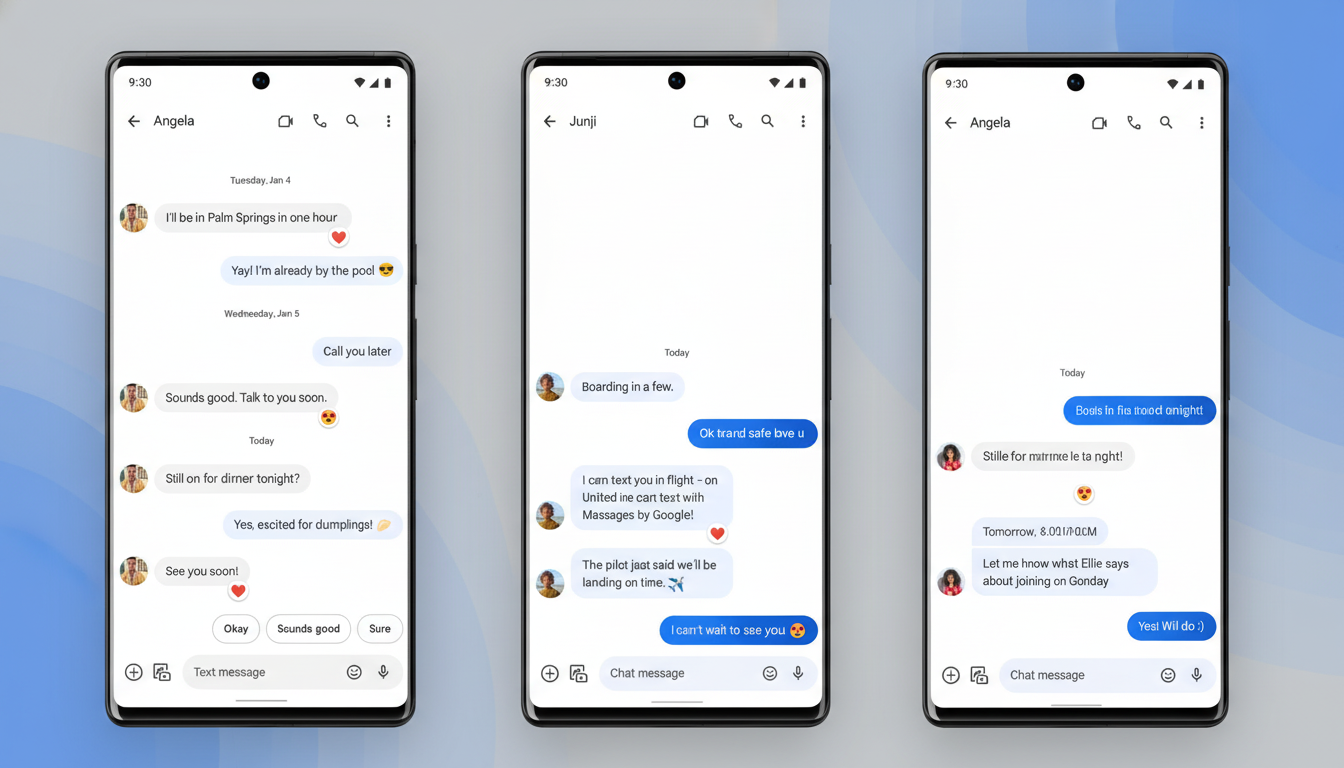Google Messages appears to be working on a Trash folder, a minor but surprisingly consequential decision for the way things are currently handled by the app based on evidence found in a recent beta build. Rather than immediately deleting texts, the feature would offer a grace period during which you could revert messages deleted in error — similar to what Gmail has been doing for years.
Strings discovered in the app’s code make mention of “Trash” and a database table for “trashed_conversations,” which suggests Google is preparing to create a specific place for deleted threads. The user interface is still behind flags, and there does not seem to be any indication that it can be enabled yet, which means that we are very early in the development stage.

Why a Trash Folder in Google Messages Matters
Today, once deleted in Google Messages, it is gone for good. Although you already have an Archive to stow threads away without deletion, a real Trash would give you a safety net for accidental taps and second thoughts. If it’s anything like Gmail, the trashed items would be kept for 30 days until they are automatically removed, which should allow a balance of control and device storage with convenience.
That buffer can be crucial for the little day-to-day stuff that might not seem important: recovering an address someone texted you after you cleaned out a thread, fetching back a two-factor code that you swiped away out of reflex, or allowing photos and videos sent over RCS to show up in your Messages app.
As messaging is the new default center of personal and transactional communication, reversible actions lead to less user friction and favor better digital hygiene.
How a Trash Folder in Google Messages Could Work
The code references make it sound like whole conversations could move into Trash, though there’s certainly no shortage of ways Google could bring back individual messages as well. Expect the typical patterns from other Google apps: a Trash section in the sidebar or overflow menu, a notice of what the auto-delete window is at any given moment, and bulk actions to restore or permanently delete.
Google’s design language also leans toward smart filters, so Trash could appear in search results with an obvious “trashed” label and a toggle to exclude it. How on-device storage is used will probably make an appearance in Settings, and there should be a one-tap, space-clearing Empty Trash button for the facility-conscious.

Background and Context in the Messaging App Space
Apple’s Messages app added a Recently Deleted section that holds deleted texts for a brief period — part of the trend for encouraging this sort of lifecycle management. Many encrypted chat apps — including Signal, for example, and Telegram as well — skip Trash altogether and depend on you to intentionally delete things while also keeping secure backups.
This shift comes as the use of RCS expands. Google has claimed that RCS now accommodates more than one billion monthly active users, and extending the safety net surrounding deletions could cut down on support headaches and heighten satisfaction among that user base. With more carriers and platforms getting behind RCS, features that soothe everyday hiccups count just as much as tentpole capabilities like encryption and read receipts.
Privacy and Policy Considerations for Trash in Messages
Anything thrown away would still live on the device until that timer hits zero — a nice convenience, but something to be aware of for privacy purposes. If you share devices with loved ones and want ironclad deletions, you can elect to empty Trash right away. Administrators could equally mandate a stricter retention in work-managed scenarios through Android Enterprise policies, assuming Google exposes the relevant don’t-delete-this control interface.
End-to-end encrypted RCS chats would still be secure in motion; a Trash folder wouldn’t change the cryptography, only the local window for retention. Content, as always, is dependent on cloud backups and device sync settings for survival beyond the handset.
What to Expect Next from Google Messages Trash
Without a live UI, there’s no timeline for release. Google frequently lays groundwork in code seeds and flips features on the server side, or releases to small groups of testers. It could be weeks, or it could be a more lengthy runway, and plans can change between now and public debut.
Still, the direction is that way: Messages is on the march toward reversible deletion, a quality-of-life feature not everyone will appreciate until they need it. If Google follows its typical pattern, a limited test release to beta users will come out before a broader rollout takes place, and the end behavior will resemble the familiar Gmail Trash system quite closely.

